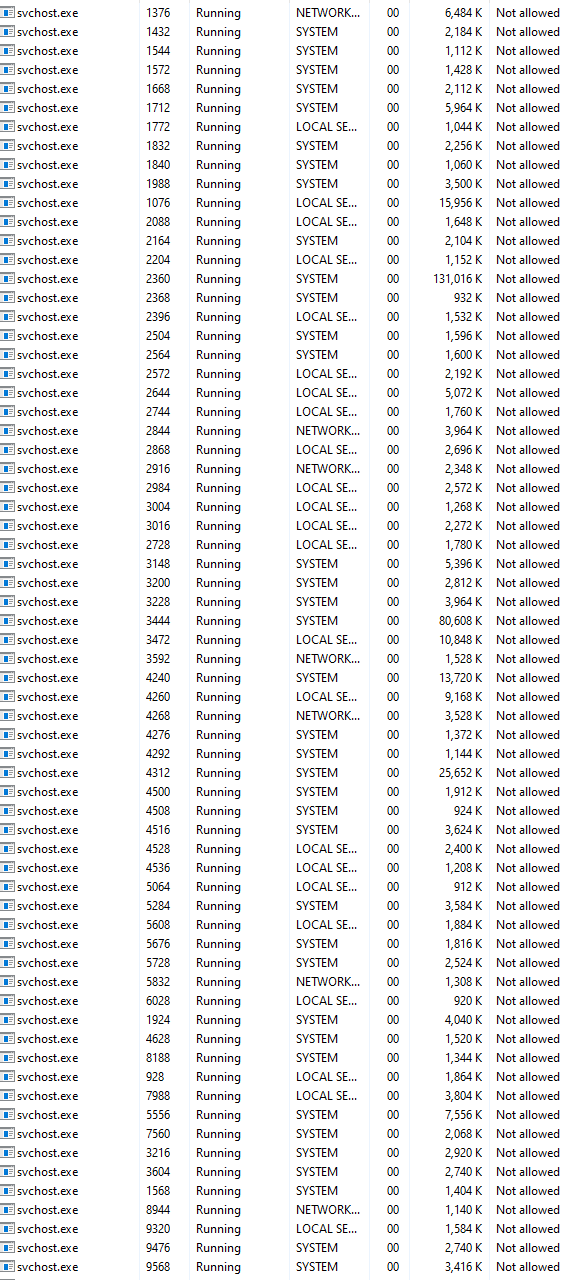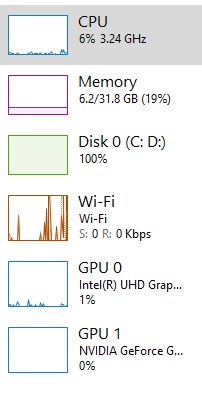Hardware: MSI GF63 8RC running an i7-8750H, GTX 1050, and 32GB of RAM on Win10.
This laptop has always been slow. Like since day one, always sluggish to do much of anything, open programs, new windows, login, play games, etc. Once it gets going it does decently, but it doesn't run like its got the hardware it does, which honestly pisses me off. I've got it on a full-performance powerplan, cooler going full-blast, stock clocks, upgraded the RAM from 8GB to 32GB, etc. but its still slow as all get out. Heck, it took me a good 5 minutes to just load this page and start writing this thread. One of the issues I've noticed is the drive gets 100% maxed way too easily. With barely anything running it constantly hits 100% usage and the whole laptop bricks. I went looking through the system processes and noticed about 70 instances of SVCHost.exe running, as well as other garbage Win10 bloatware. I updated my batch file which periodically kills off bloatware to kill any task named "SVCHost.exe" and ran as admin, then BSOD. Honestly not sure why there are so many instances of SVCHost running, how to take care of that, and if that might solve the massive performance issue my laptop has, but I thought I'd reach out.


This laptop has always been slow. Like since day one, always sluggish to do much of anything, open programs, new windows, login, play games, etc. Once it gets going it does decently, but it doesn't run like its got the hardware it does, which honestly pisses me off. I've got it on a full-performance powerplan, cooler going full-blast, stock clocks, upgraded the RAM from 8GB to 32GB, etc. but its still slow as all get out. Heck, it took me a good 5 minutes to just load this page and start writing this thread. One of the issues I've noticed is the drive gets 100% maxed way too easily. With barely anything running it constantly hits 100% usage and the whole laptop bricks. I went looking through the system processes and noticed about 70 instances of SVCHost.exe running, as well as other garbage Win10 bloatware. I updated my batch file which periodically kills off bloatware to kill any task named "SVCHost.exe" and ran as admin, then BSOD. Honestly not sure why there are so many instances of SVCHost running, how to take care of that, and if that might solve the massive performance issue my laptop has, but I thought I'd reach out.




